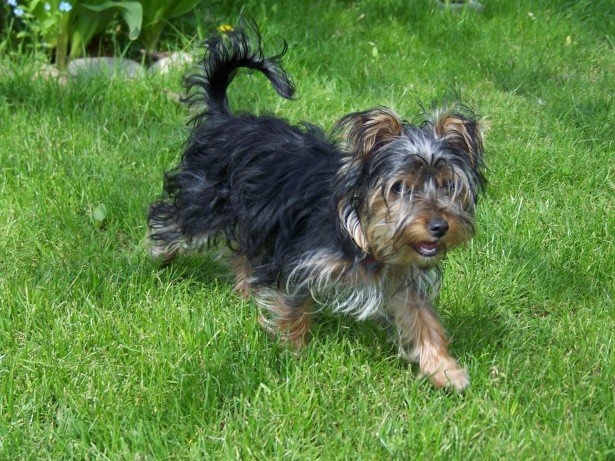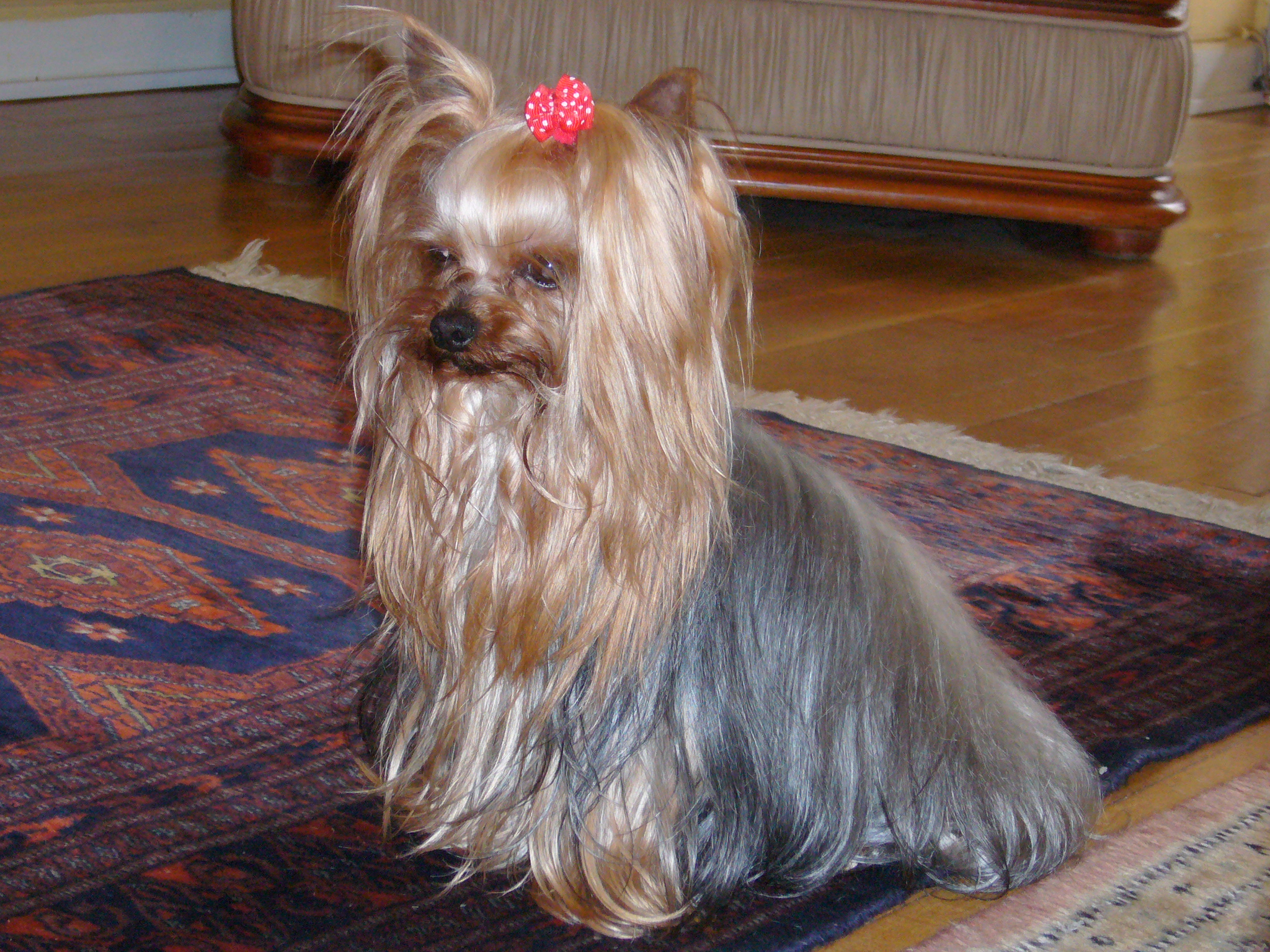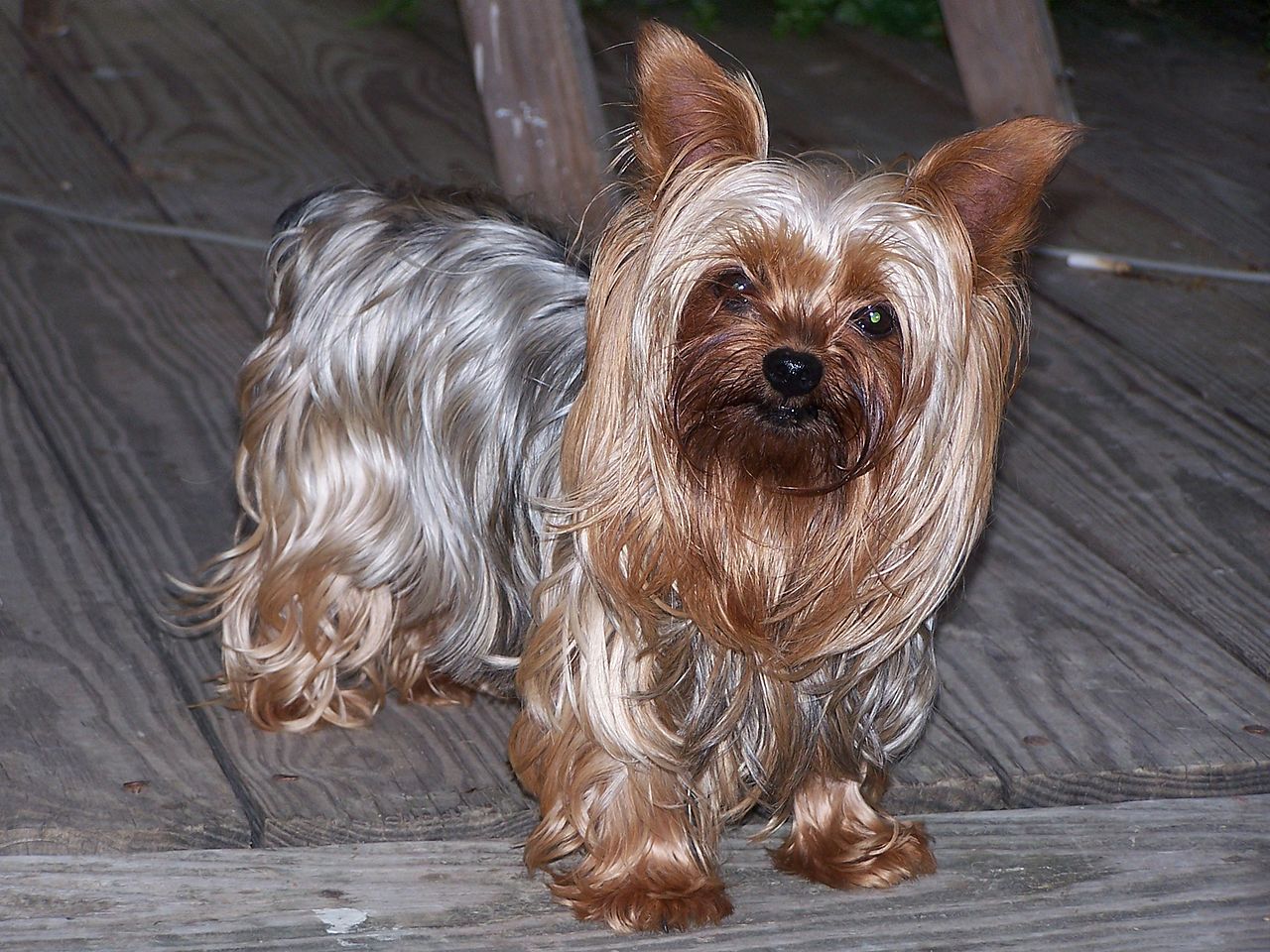Images




The Yorkshire Terrier (often shortened as Yorkie) is one of the smallest dog breeds of the terrier type and indeed of any dog breed. The breed developed during the 19th century in Yorkshire, England. Ideally its maximum size is 7 pounds (3.2 kg). A popular companion dog, the Yorkshire Terrier has also been part of the development of other breeds, such as the Silky Terrier. Most have a black and tan coat, but they are also known to have a silver-grey or a blonde coat.
The Yorkshire Terrier originated in Yorkshire, England. In the mid-19th century, workers from Scotland came to Yorkshire in search of work and brought with them several varieties of terrier. Breeding of the Yorkshire terrier was "principally accomplished by the people—mostly operatives in cotton and woollen mills—in the counties of Yorkshire and Lancashire." In the 1800s, miners wanting to develop a ratting terrier, bred Black-and-Tan Terriers with the Paisley and Clydesdale Terriers. Details are scarce. Mrs A. Foster is quoted as saying in 1886, "If we consider that the mill operatives who originated the breed were nearly all ignorant men, unaccustomed to imparting information for public use, we may see some reason why reliable facts have not been easily attained."
The breed comes from two distinct dogs, a male named Old Crab, a female named Kitty, and another female whose name is not known. The Paisley Terrier, a smaller version of the Skye Terrier that was bred for a beautiful long silky coat, also figured into the early dogs. Some authorities believed that the Maltese was used as well. "They were all originally bred from Scotch Terriers (meaning dogs from Scotland, not today's Scottish Terrier) and shown as such the name Yorkshire Terrier was given to them on account of their being improved so much in Yorkshire." Yorkshire Terriers were shown in a dog show category (class) at the time called "Rough and Broken-coated, Broken-haired Scotch and Yorkshire Terriers". Hugh Dalziel, writing in 1878, says that "the classification of these dogs at shows and in the Kennel Club Stud Book is confusing and absurd" in lumping together these different types.
The Yorkshire Terrier was introduced in North America in 1872 and the first Yorkshire Terrier was registered with the American Kennel Club (AKC) in 1885. During the Victorian era, the Yorkshire Terrier was a popular pet, and show dog in England, and as Americans embraced Victorian customs, so too did they embrace the Yorkshire Terrier. The breed's popularity dipped in the 1940s, when the percentage of small breed dogs registered fell to an all-time low of 18% of total registrations. Smoky, a Yorkshire Terrier and famous war dog from World War II, is credited with beginning a renewal of interest in the breed. The AKC ranked the Yorkshire Terrier as the 6th most popular purebred in the United States in 2012 and 2013.
For adult Yorkshire Terriers, The American Kennel Club places importance on coat colour, quality, and texture. According to The Kennel Club (UK), the hair must be glossy, fine, straight, and silky. Traditionally the coat is grown out very long and is parted down the middle of the back, but "must never impede movement.". The hair of the Yorkshire Terrier can be used to determine content of metals in the dog organism.
Yorkshire Terriers are an easy dog breed to train. This results from their own nature to work without human assistance. They are naturally smart and quick to learn with many being food and/or praise motivated. Because they were developed as a working breed, many need a lot of both physical and mental stimulation—with both long walks/runs but also indoor games and training to keep their mind busy. They are known for being yappy, but many have reported that a contented Yorkie is a quiet one—that will happily curl up on your knee in the evening. But they are all individuals, with some being much more laid back than others, and the breeder should ideally be able to advise on the needs and temperaments of their particular line. Yorkies are easily adaptable to all surroundings, travel well, and make suitable pets for many homes. Due to their small size, they require limited exercise but need daily interaction with people. They thrive on attention and love. Many are more timid around other dogs and prefer to stay close to their humans for comfort.


